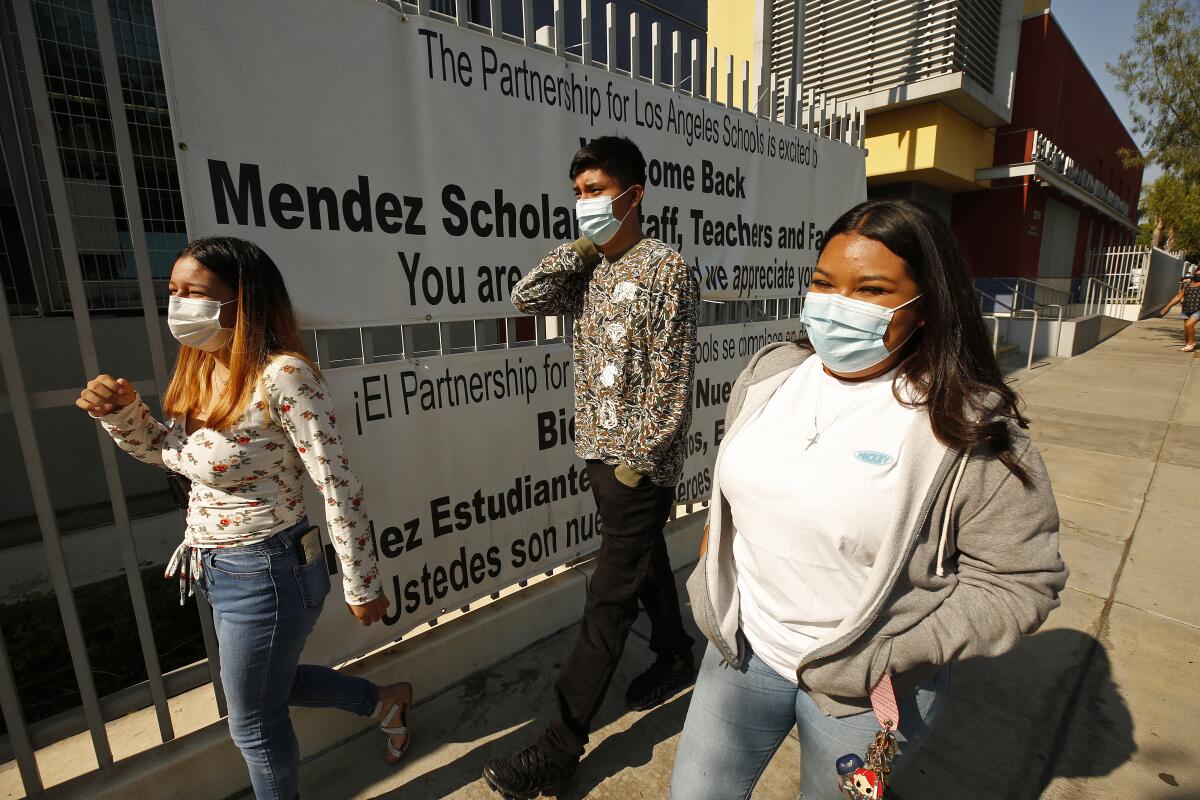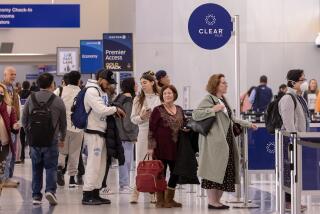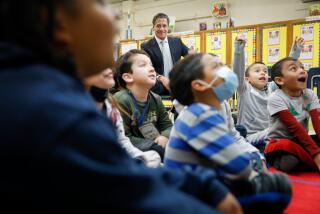What happens when schoolchildren get coronavirus?

With children returning to school, one big question is what happens when new coronavirus cases occur on campus.
Early data from testing in L.A. schools show relatively few cases during the early days of the school year. As of Tuesday night, L.A. Unified officials reported seven cases that were possibly transmitted from one person to another while on a campus since the Aug. 16 start of school. The district also listed 2,304 total “active” infections among 451,000 students and 60,000 employees.
On Wednesday the district confirmed its first coronavirus outbreak at Grant Elementary School in Hollywood, sending home an entire classroom of children — and potentially triggering new concerns for parents during a surge in infections caused by the highly contagious Delta variant.
Here is a look at what happens when a student or staff member tests positive:
What to expect when a student tests positive
Students who are on campus with symptoms of illness and when a coronavirus test indicates an infection will be given a surgical mask and accompanied to an isolation space until they can return home, according to L.A. County Department of Public Health policy.
A person is supposed to isolate at home for 10 days if experiencing symptoms of illness or after testing positive. The school, working with health officials, will identify those who have been in close contact with the infected person and then quarantine decisions will be made.
L.A. Unified revised its rules Monday to enable more students to avoid quarantine. Under the new policy, vaccinated students who are close contacts do not have to quarantine unless they develop symptoms. Close contacts who are vaccinated still must be tested five days after exposure. The district’s new policy aligns with that of L.A. County.
Close contacts who are unvaccinated must quarantine for up to 10 days.
What parents are told
- CONTACT TRACING: Los Angeles County health officials say they will be aggressive about contact tracing after confirmation of an infection. There is some uncertainty about who will be notified about exposures and by whom. Generally, those who may have been exposed to the infected person will receive direct communication.
- ‘CLOSE CONTACT’: The definition of a “close contact” has been unclear to many parents. Early on, the definition was based on the length of time a person was exposed to an infected individual. But now the situation has become more complicated: Were both people wearing masks? Was the exposure indoors or outdoors? Were either of them vaccinated? School and public health authorities have the task of identifying close contacts, but the definition of a close contact can vary from place to place.
- NOTIFICATIONS: In cases of notification, parents will not learn the identity of the infected individual, as schools can’t provide medical information or records about another person. Schools are generally notifying parents if their child has been in close contact with an infected person. Also, many school districts are setting up dashboards showing how many active infections are at a campus. In Los Angeles, the district has online data and a parent and teacher group has created its own dashboard.
- OUTBREAKS: A cluster of three or more potentially linked cases at one school over 14 days could represent an outbreak and could lead to having a group of students or even a class quarantine at home. Decisions on how a school handles an outbreak will be made in concert with local public health authorities. Dr. Barbara Ferrer, the L.A. County public health director, said the closure of an entire school would be unlikely. What could be more likely, she said, is that students in a classroom where a cluster of cases has originated — or a group of those students — may need to quarantine for 10 days. Schools are expected to provide ongoing academic support for students while they are at home.
For students who miss school
- CALIFORNIA LAW: A recent California law requires school districts to offer independent study as an educational option for the 2021-22 school year for students. Parents should know that the “distance learning” or “hybrid learning” practices of last year with their child’s teacher are no longer available.
- INDEPENDENT STUDIES: Independent study requires a written master agreement signed by the student, parent or guardian, and the supervising teacher. Within the agreement, school districts have to define what level of educational progress a student has to meet to remain in the program. The independent study program varies by school district and by grade: Elementary school students have a different schedule from middle and high school students. Generally, students will have teacher-led live instruction and then work independently on assignments. In this learning option, attendance is based on work completion. If a student doesn’t participate in live instruction or complete assignments, and isn’t making adequate progress in this virtual classroom, the supervising teacher will convene an evaluation conference with the student’s parent or guardian to determine whether the student must return to in-person instruction.
- PULLING KIDS OUT: Can a parent switch a child’s mode of learning at any time? Yes. There is an obligation under state law for school districts to offer independent study as an option. Check with your district for instructions on how to enroll.
More to Read
Sign up for Essential California
The most important California stories and recommendations in your inbox every morning.
You may occasionally receive promotional content from the Los Angeles Times.














